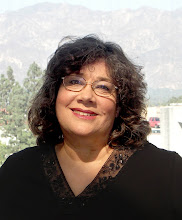
Sometimes you have to get up early on Tuesdays to win Mystery History!
Liz wins with her 7:56 a.m. Tuesday guess "raising or repairing or erecting the war memorial on the corner of Colorado and orange grove next to the Norton Simon Museum."
In the photo above, shot by Howard Ballew on May 19, 1948, a worker painstakingly removes the 135-pound bronze eagle from the top of the World War I memorial flagstaff while sidewalk superintendents look on. (I've always been especially intrigued by the Pasadena police officer and the guy with the stogie.)
The flagstaff had just been removed from the intersection of Orange Grove and Colorado by a giant crane because it had been deemed a traffic hazard.




In a few weeks, after having been cleaned up a bit, the flagstaff would be relocated to the little patch of grass at the northeast corner of Colorado and Orange Grove.
World War I began in April 1917 and ended Nov. 11, 1918. Nearly 2,500 Pasadenans served; 46 were killed in action.
The idea to build the memorial flagstaff originated in 1919 when the Board of Pasadena City Directors established a community committee to shepherd the design and construction of a memorial flagstaff. The $36,000 project was funded by contributions from 2,000 local donors. It was decided that the memorial would be placed in the middle of the intersection of Orange and Colorado to enhance Pasadena's west gateway.
The creative talent for the monument was among the cream of the crop of that period: architect Bertram Goodhue and sculptor Lee Lawrie.
Upon seeing the final design in 1925, Charles Moore, president of the U.S. Commission of Fine Arts in Washington, D.C., said he considered it "the finest flagstaff base in the country if not the world."
The monument was dedicated Feb. 12, 1927.
In 1999 the City of Pasadena submitted an application for restoration funding to SOS! (Save Outdoor Sculpture!), a joint project of Heritage Preservation and the Smithsonian American Art Museum.
The restoration process included removal of corrosion, stains and graffiti plus structural repairs. It took some time, but the results were magnificent! The memorial was rededicated on Veterans Day 2001.
Many of you are aware of the incredible 115-foot-tall monument to Pasadenans who served -- and fell -- in World War I. But if you haven't seen it up close, I really encourage you to park across the street on Green or Grand, then walk the couple of blocks to see the memorial and study every detail. It's truly magnificent.

Seven-foot-tall bronze figures in three-quarter relief go all around the cylindrical base, depicting soldiers, sailors, an officer, an aviator, and a Red Cross nurse helping a wounded soldier. Above them, also in bronze, are a California bear, a ship, a fasces (bundle of rods with an ax, signifying authority) and the names of World War I battles.


The inscription in the granite going all around the base of the flagpole reads:
IN PROUD REMEMBRANCE OF OUR GLORIOUS DEAD
MCMXVII MCMXVIII
You'll also find the find the mark of the foundry -- John Polachek Bronze & Iron Co. Inc./Long Island City, N.Y. -- in the granite.
The cast-bronze eagle is proudly perched at the very top of the flagstaff.

The pole itself weighs four tons and is made of steel overlaid with teakwood and clad in copper.
The memorial is on one of our many public art walking tours.
Many thanks to Los Angeles Public Library.

10 comments:
Congratulations to de PA!
Can you believe it?!
And, thanks again to the PHO for her historical research.
I'm getting real tired of Liz.
I love the Mystery History picture, but not enough to get up early to try to solve it. I don't think the new pictures should uploaded until a decent hour, say 1 pm, instead of in the middle of the night at 8 am. It is clearly unfair to those who work nights. Imagine our disappointment when we eagerly sign on to Pasadena PIO hoping to see the new picture and have a fair chance at winning the fabulous prize, only to see some bright-eyed, bushy-tailed morning person, probably jacked up on coffee, has already solved it. You may counter with "The early bird catches the worm," but I will remind you also that the late worm avoids the bird.
U2, KB?
HoHooooo
KTRP: what about de fairness to those who sleep nights?
Nice picture of the eagle. How'd you get up there?
Oh, now, would you guys have known the answer at 1pm?
Hmm?
Congratulations, PA.
Don't be bitter, Kevin.
Hey, Mike (Cafe Pasadena) -- You won Mystery History recently! So it can be done...
Petrea, the photo of the cast-iron eagle was in photo archives. The photo is undated and there's no narrative included. I hate it when that happens.
What can I tell you Kevin. It's a known fact, I get up early on Tuesdays to take out the trash. Put mystery history on any other day of the week and this bird will be in her nest.
True, Ann(PHO)- it can be done. Even by a K9!
Just to be clear...WWI started in 1914. The USA didn't get in until 1917.
To see more of the sculptor, Lee Lawrie's work, please visit my site, http://www.leelawrie.com.
When this flagstaff memorial was created, Lawrie was also creating the sculpture for the Nebraska State Capitol.
Lawrie's most famous statue is the Atlas at the Rockefeller Center in New York City.
Lawrie has sculpture in 23 states across the nation, including Hawaii and some in France and England.
Lawrie also created all of the Art Deco sculpture at the Los Angeles Central Public Library, and did a great deal at Caltech, although much of that has been lost.
Post a Comment